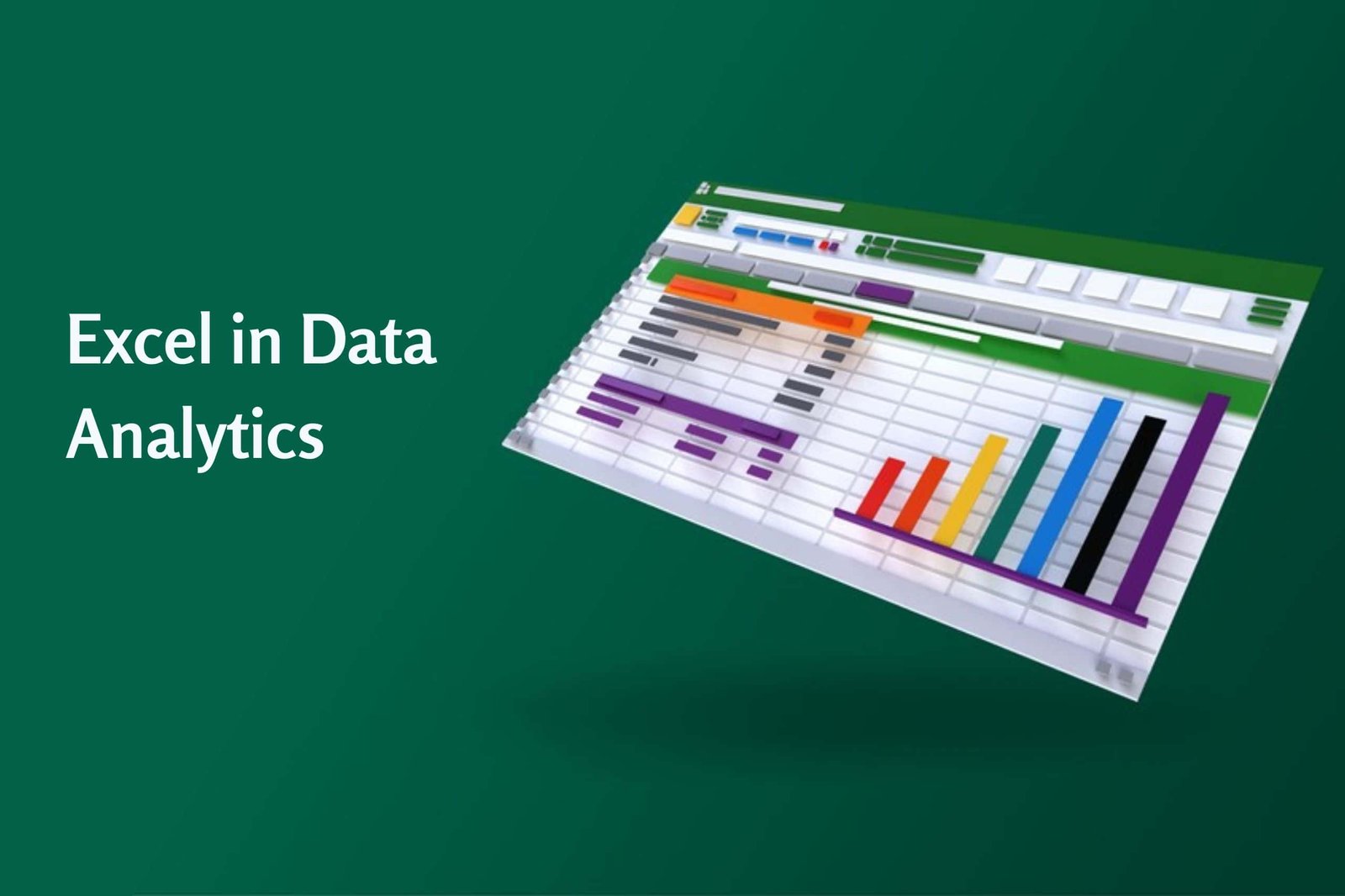The demand for Data Analysts is high in the market, considering the large volumes of data engaging business organisations. Data Analysts are crucial for companies to help them gather, analyse and interpret data, allowing them to make better decisions. Accordingly, Data Analysts use various tools for Data Analysis and Excel is one of the most common. Significantly, the use of Excel in Data Analysis is beneficial in keeping records of data over time and enabling Data Visualization effectively.
How to use Excel in Data Analysis and why is it important? Let’s find out in the blog!
What is Data Analysis?
The process of methodically analysing and assessing data to gain valuable insights and make reasoned decisions is known as data analysis. Data Analysis involves transforming, cleaning, and organising data using computational techniques and statistical methods for convenient study. Data analysis aims to conclude meaning from unprocessed data to respond to inquiries, resolve issues, and enhance decision-making. Furthermore, looking at data from many sources, including surveys, experiments, and observational studies, may be necessary. Additionally, you need to use data mining, machine learning, and visualisation methods to spot patterns, trends, and relationships in the data.
What does Excel Do?
Microsoft Excel is a powerful software tool for visually organising, analysing and presenting data. It offers many features and functions that enable users to perform calculations, create charts and graphs, and automate repetitive tasks. Excel conducts a variety of roles, such as budgeting, financial analysis, project management, and Data Visualisation. Excel’s charting and graphing capabilities allow users to display data, making it easier to identify trends and patterns visually. Users can customise charts and graphs with different colours, labels, and formats to effectively create compelling visuals that convey complex information. With the help of an Excel Spreadsheet, it is possible to organise data in a readable format and gain actionable insights for organisations. Complex datasets require the use of functions and customisation of fields carefully analyse the data.
Importance of Excel in Data Analysis
- Data organisation: Excel provides various tools for organising data, including sorting, filtering, and searching. It is easier to find and analyse specific data points quickly.
- Calculation and analysis: Excel has various mathematical functions and formulas that can perform complex calculations and comments on data sets. These functions can summarise data, perform statistical analysis, and more.
- Charting and graphing: Excel’s charting and graphing capabilities allow users to visualise data in various formats, making it easier to identify patterns and trends in data.
- Integration with other tools: Excel can be easily integrated with other data analysis tools, such as Power BI and R, allowing for more advanced analysis and visualisation.
- Free Templates: One of the most extraordinary things about using Excel is to create dashboards and templates. There are various free templates that you can use for organising and visualising data.
- Code to Automate: MS Office has its coding language called Visual Basic for Applications (VBA), allowing you to write code for almost any activity you perform in Excel.
- Transform and Clean Data: as a Data Scientist or Analyst, you might need to deal with different types of data, some of which may be messy or contain errors. You may need to clean and transform data that helps eliminate messy datasets by running a power query.
How to Use Data Analysis in Excel?
Considering that Excel has immense importance for Data Analysts within an organisation, it is important to understand that there are various ways in which Data Analysis is used in Excel. These include the following:
- Data Entry: It allows you to include records within a collection of information within a sheet.
- Data Management: Furthermore, the management of projects and the organisation of data has never been easier. Excel helps track the records’ accountability for effective Data Management.
- Accounting: Accordingly, Excel is essential for calculations and computations using mathematical functions. It is crucial for keeping records of account books for a company.
- Financial Analysis: Additionally, Excel helps conduct financial analysis with its easy-to-use format and ensures to expansion of financial capabilities using its various functions.
- Charts and Graphs: Considerably, one of the most significant benefits of Excel is its ability to visualise data. Accordingly, with the help of representing data graphically, it becomes easy to communicate with internal stakeholders and understand growth probability.
- Time management: Excel helps keep records of data over time and, further, allows you to analyse those data for making adjustments enabling effective time management.
- Task Management: Moreover, Excel helps Data Analysts to ensure that they keep track of all the tasks within an organisation, therefore, managing the entire organisation effectively.
- Customer Relationship Management (CRM): Significantly, keeping records of customer data and information becomes more accessible with Excel. Data analysis for customers and customer relationship management becomes easier for companies and individual contractors.
Conclusion
Therefore, the importance of Excel in Data Analysis is understood as one of the most effective tools for organisations. While companies may use various Data Analytics tools for conducting precise work, Excel remains one of the most popular. By learning Excel efficiently, you upskill yourself to find enormous opportunities as a Data Analyst. If you choose a career path as a Data Analyst, you should opt for Pickl.AI’s Online Data analytics courses . From programming languages to Statistical analysis, you will have a comprehensive approach along with expert mentorship to learn from.











